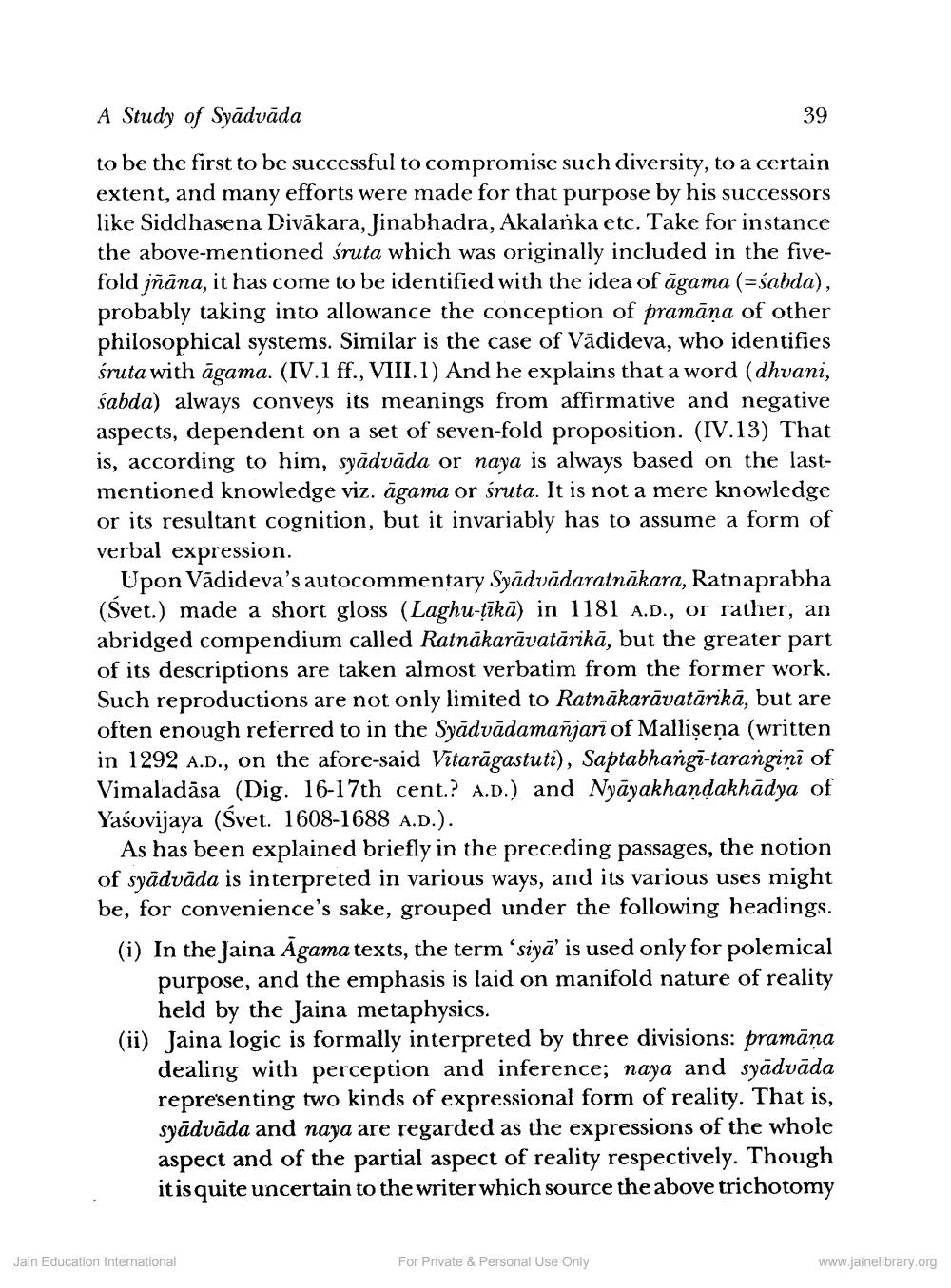________________
A Study of Syādvāda
39
to be the first to be successful to compromise such diversity, to a certain extent, and many efforts were made for that purpose by his successors like Siddhasena Divākara, Jinabhadra, Akalanka etc. Take for instance the above-mentioned śruta which was originally included in the fivefold jñāna, it has come to be identified with the idea of agama (=sabda), probably taking into allowance the conception of pramāņa of other philosophical systems. Similar is the case of Vädideva, who identifies śruta with agama. (IV.1 ff., VIII.1) And he explains that a word (dhvani, sabda) always conveys its meanings from affirmative and negative aspects, dependent on a set of seven-fold proposition. (IV.13) That is, according to him, syādvāda or naya is always based on the lastmentioned knowledge viz. āgama or śruta. It is not a mere knowledge or its resultant cognition, but it invariably has to assume a form of verbal expression.
Upon Vadideva's autocommentary Syadvādaratnākara, Ratnaprabha (Svet.) made a short gloss (Laghu-țīkā) in 1181 A.D., or rather, an abridged compendium called Ratnākarāvatārikā, but the greater part of its descriptions are taken almost verbatim from the former work. Such reproductions are not only limited to Ratnākarāvatārikā, but are often enough referred to in the Syādvādamañjarī of Mallișeņa (written in 1292 A.D., on the afore-said Vitarāgastuti), Saptabhangi-tarangini of Vimaladāsa (Dig. 16-17th cent.? A.D.) and Nyāyakhandakhādya of Yasovijaya (svet. 1608-1688 A.D.).
As has been explained briefly in the preceding passages, the notion of syādvāda is interpreted in various ways, and its various uses might be, for convenience's sake, grouped under the following headings. (i) In the Jaina Āgama texts, the term “siyā' is used only for polemical
purpose, and the emphasis is laid on manifold nature of reality
held by the Jaina metaphysics. (ii) Jaina logic is formally interpreted by three divisions: pramāna
dealing with perception and inference; naya and syādvāda representing two kinds of expressional form of reality. That is, syādvāda and naya are regarded as the expressions of the whole aspect and of the partial aspect of reality respectively. Though it is quite uncertain to the writer which source the above trichotomy
Jain Education International
For Private & Personal Use Only
www.jainelibrary.org




